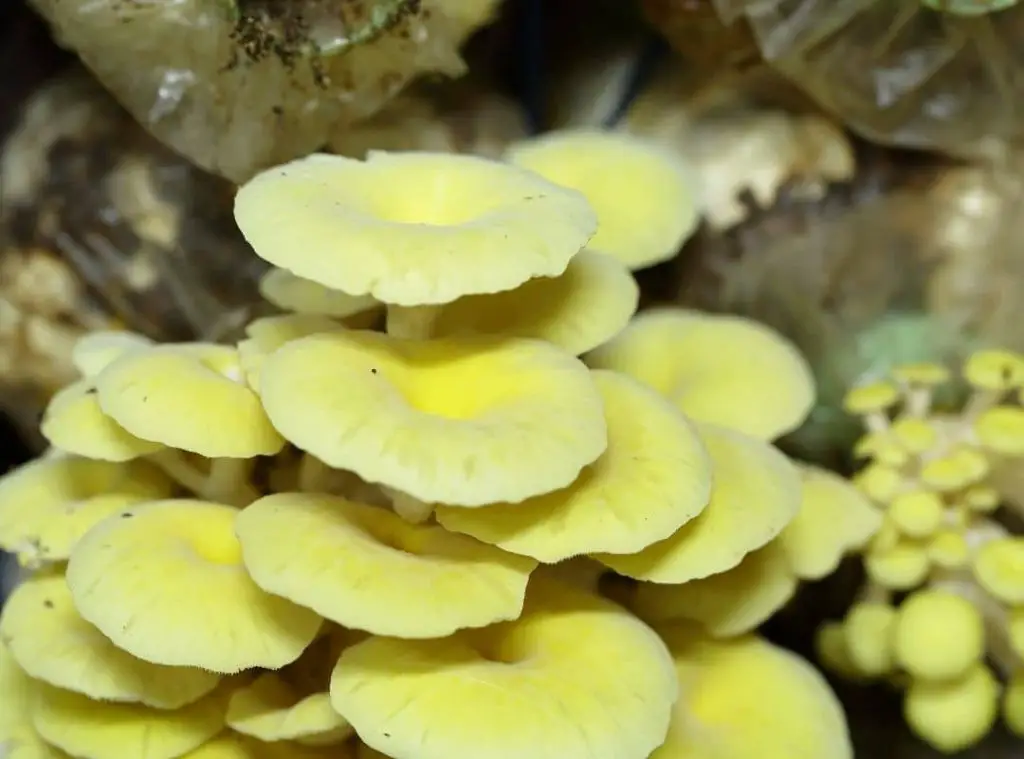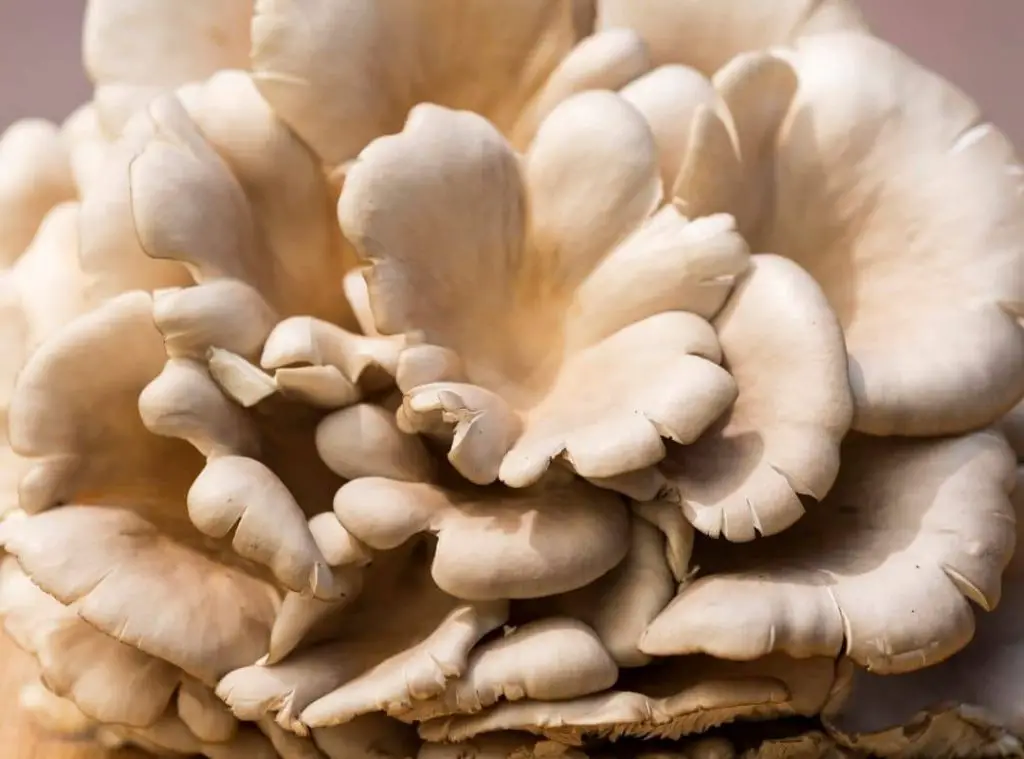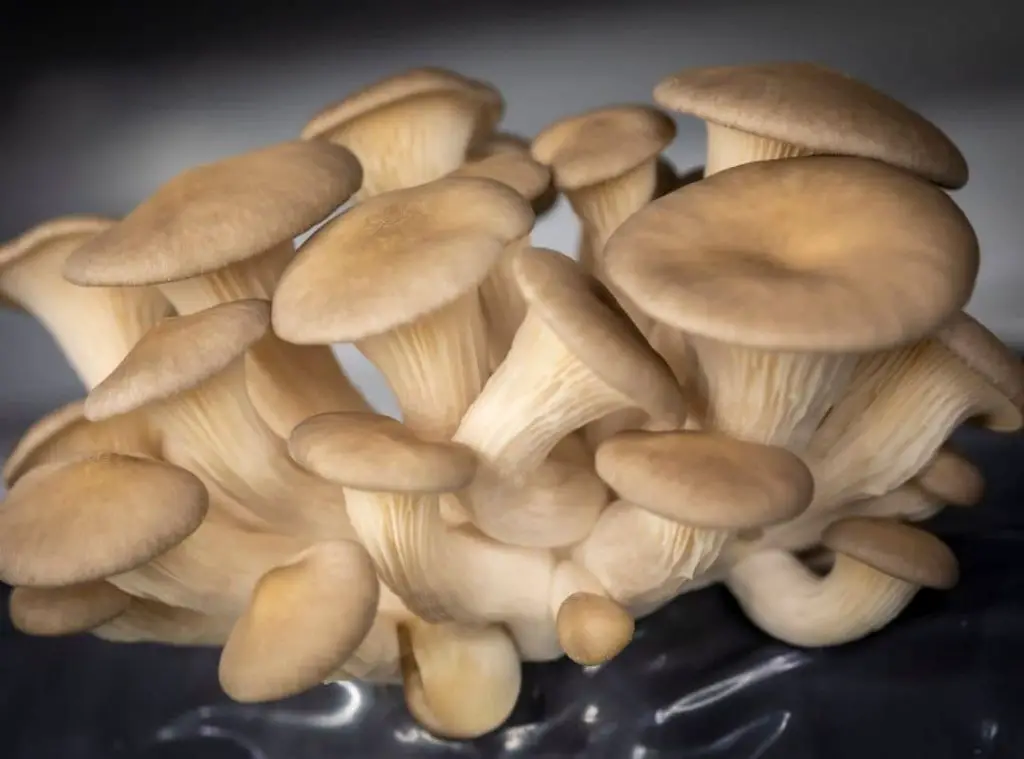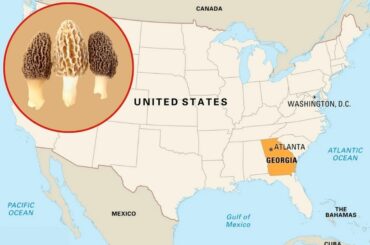If you are looking for an answer for the question “Why do oyster mushrooms turning yellow?“, your are in the right place. This question bothers me a lot a few months ago. But I found a solution for that problem with a good resrch and help of my mushroom growing friends. There are several reasons for this question and in this article I am going to discuss those reasons in detail. So lets dig in.

Why do oyster mushrooms turning yellow?
Contents
- 1 Why do oyster mushrooms turning yellow?
- 2 Can you eat yellowing oyster mushrooms?
- 3 How do you know when oyster mushrooms are bad?
- 4 What does mold on oyster mushrooms look like?
- 5 How long will oyster mushrooms last in the fridge?
- 6 Oyster mushrooms turning brown
- 7 How to keep oyster mushrooms fresh
- 8 Conclusion
Yellowing of oyster mushrooms could occur at any stage of the growth stage. Yellowing could happen due to several reasons, such as; high humidity, dry air, inadequate ventilation, pests, illness, and sudden changes in humidity. If oyster mushrooms are covered with a yellowish coating, then most likely the humidity is too high.
It could have possibly been caused by the lack of evaporation or high humidity in the air. It is advised not to water the fruiting body of the mushrooms directly. Only the substrate should be watered and spraying the mushrooms is not necessary.
If the substrate is moist enough, your mushrooms will not dry out. Too dry air could also cause the oyster mushrooms to turn yellow. This is evident if the stems are darkened, dry out and crack along with the yellowing caps. If the yellowing occurs mostly in the edges of the mushroom caps, it is most commonly caused by less humidity.
Oyster mushrooms ideally should be grown in 80-95% humidity and should be kept under non-direct filtered sunlight. Even your room’s humidity is low, the oyster mushrooms could turn yellow due to the lack of proper ventilation.
Air flow path should be maintained higher and lower of the growth level of mushrooms. The air flow should not meet the level of oyster mushrooms directly. In addition to the above reasons, yellowing of oyster mushrooms can be caused by issues related to substrate and fungal or bacterial diseases as well. Especially when the yellowing has occurred unevenly on the caps.
Can you eat yellowing oyster mushrooms?
Oyster mushrooms start to sporulate when mature, turn yellow and can get a foul smell. Many have claimed them to be still edible and no change of taste has been noticed. But it is advised to use them before they change the color for a better taste and texture. Oyster mushrooms should be consumed within 2-3 days of harvesting.
How do you know when oyster mushrooms are bad?
Oyster mushrooms should be checked for discolorations before consumption. Oyster mushrooms have an inherent shade of light gray or brown.
The color of the mushroom depends on the mushroom species. if mushroom becomes darker or developed spores that mean they are not good to consume. You should pay attention to the texture of the mushroom as well when you touch the skin of the mushroom.
Fresh oyster mushrooms should be dry. The mushroom has gone bad if the texture has become slimy. If mushrooms are newly harvested or fresh, the skin is soft. If the mushroom is dry and hard, your mushroom has gone bad. The smell of the mushroom can also be a giveaway to its freshness. Oyster mushrooms normally have a fresh, earthy smell. An unpleasant smell (ammonia-like) is a sign that it has gone bad.

What does mold on oyster mushrooms look like?
Mold on Oyster mushrooms could look like white fuzz or white blooms. They can be seen on caps, stems or even inside the mushroom flesh. This could probably be the mycelium growing on the fruiting body of the mushroom.
This could happen if the mushrooms are left in a warm environment or stored in a plastic bag or under a plastic film, where fresh air flow was blocked which resulted in regrowth. You do not have to discard the mushrooms altogether when this happens. The areas with white fuzz could be trimmed off and used.
When the heat is applied on the mushrooms during cooking this white fuzz should disappear. Nonetheless, the fruiting body of the oyster mushrooms and the mycelium taste similar. Other types of molding on oyster mushroom growth bags can look like green fuzz. This is commonly caused by the fungi which belong to the Trichoderma family.
This is a very common contamination encountered when growing mushrooms. This occurs due to the poor sterile conditions when preparing the substrate. If the molding spots are small, you should isolate the bag and the oyster mushroom mycelium will take care of the contamination by itself and will continue to grow normally. But if the molding has spread more than 20%, it is better to remove the bag altogether.
How long will oyster mushrooms last in the fridge?
Oyster mushrooms are fragile and can spoil quickly if not stored properly. Because of their flat shape, they have a large surface area and dry out quickly. Oyster mushrooms can be stored in the fridge in a loosely closed plastic bag. The mushrooms shouldn’t be tightly wrapped in plastic film. There should be enough room for air flow. This way they should stay fresh for 5 to 7 days.
Oyster mushrooms turning brown
Certain varieties of Oyster mushrooms have an innate light brown or gray color on the caps. You should check whether the variety of your oyster mushroom has an inherent brown color. If this is not the case, browning of the mushrooms has probably been caused by the environmental changes.
Oyster mushrooms are extremely sensitive to their growing conditions. Therefore the slight changes in humidity, temperature and substrate issues could cause the mushrooms not to grow their best. Browning of the mushroom caps can be caused by excessive moisture. It is advised not to water the fruiting bodies directly, as the water droplets on the caps could cause browning, especially with young pins.
To prevent this watering should be done only on the substrate. Browning could also be caused by poor air flow. You should ensure proper ventilation in the growth chamber as well.

How to keep oyster mushrooms fresh
Fridge
Oyster mushrooms can be stored in the fridge by storing them in a loosely closed plastic bag. They could also be placed on a dry paper towel with a plate underneath and wrap them in plastic film. The oyster mushrooms can also be stored in a paper bag in the fridge. But this method could excessively dry out the mushrooms.
Avoid washing or soaking the mushrooms before putting them in the fridge. This could speed up the mushrooms going bad. Alternatively, you could trim any parts that have mold or discoloration and wipe the dirt with a clean cloth or paper napkin prior to put in the fridge.
When storing in the fridge you should be careful not to place them near food items that gives out a strong smell or taste. Oyster mushrooms are quick to absorb aromas and this will change its original taste.
Freezer
Oyster mushrooms can be stored in the freezer in bulk. Freezing or drying could help keep them good for longer times. Prior to freezing, boil the mushrooms for about 3 minutes. Followed by rinsing with cold water. Drain the excess water thoroughly and seal in a freezer bag. When frozen, oyster mushrooms can last in the freezer for up to a year without going bad. But it is best to use them within 6 months, for the flavor, texture, and general freshness and quality to be intact.
Pantry
Oyster mushrooms can be stored in the pantry, only for 24-48 hours under room temperature. But the mushrooms should be kept dry and under good ventilation and should not be covered in plastic.
Dehydrate
Oyster mushrooms can be dehydrated and stored in a pantry under normal room temperature for longer times as well. Oyster mushrooms can be dried in a preheated oven of 1500 Fahrenheit. Slice the oyster mushrooms into ½ cm thick pieces and place them on a baking tray. Roast the pieces for an hour, then flip the pieces over and roast for another hour. If they are not completely dry, flip them over and give them another 30 minutes at a time until dry.
The mushrooms should be cooled to room temperature before storing in an airtight container. Alternatively you could opt for freeze drying or sun drying the raw mushrooms as well. Commercially, food dehydrating equipment could also be used for this purpose. The dried mushrooms can be rehydrated by soaking mushroom in warm water for a few minutes.
Canning
Oyster mushrooms can be canned using a pressure canning. The mushrooms should be trimmed at stem ends and the discolored parts should be removed. Soak the mushrooms in cold water for 10 minutes. Wash the soaked mushrooms with clean water to remove any residue dirt.
Then the mushrooms should be boiled for up to 5 minutes. Pack the boiled mushrooms in glass jars leaving headspace. Fill the jars with boiling water, maintain the headspace and close the lid. The canning media could be replaced with brine water or oil. Put the jars under pressure canning. Processing pressure: 10 lbs (69 kpa) weighted gauge, 11 lbs (76 kpa) dial gauge. Maintain the pressure for up to 45 minutes for ½ liter jar size.
Oyster mushrooms can be pickled in place of pressure canning prior to storing. To be pickled, the mushrooms should be washed and cut into small pieces. Cook the pieces of mushrooms in brine water until tender. To prepare the pickled medium, combine vinegar, onion, salt, sugar and pepper in a pot and bring to a boil. Drain the mushrooms and combine them with the pickled media. Place them in jars along with garlic and bay leaves.
Top up the jars with brine water leaving headspace. Use a wooden stick to remove any remaining air bubbles and put the lids on. Place the jars in boiling water for about 15 minutes. Let the jars cool down at room temperature. Pickled oyster mushrooms can be used after 48 hours. The sealed cans can be stored in a pantry for up to 1 year
Conclusion
Oyster mushrooms are extremely sensitive to their environment. Changes in the humidity, air flow, temperature could directly impact the health of the mushroom growth. These could lead to problems such as; yellowing and browning of the caps and molding. Although molding and slight yellowing does not cause health problems when consumed, it is advised to use the mushrooms in their prime condition to ensure better taste and texture.
After harvesting, oyster mushrooms can go bad very quickly. If the mushrooms have dark spots or blemishes and feel slimy or damp to the touch, they have gone bad and cannot be consumed. The mushrooms can be stored in a fridge for up to 5-7 days and in the pantry for 1-2 days. If properly preserved they could last up to 1 year. Canning, dehydration and freezing are good ways to store the oyster mushrooms for longer periods.
Read Next : Trich In Mushrooms | A Dangerous Problem |





